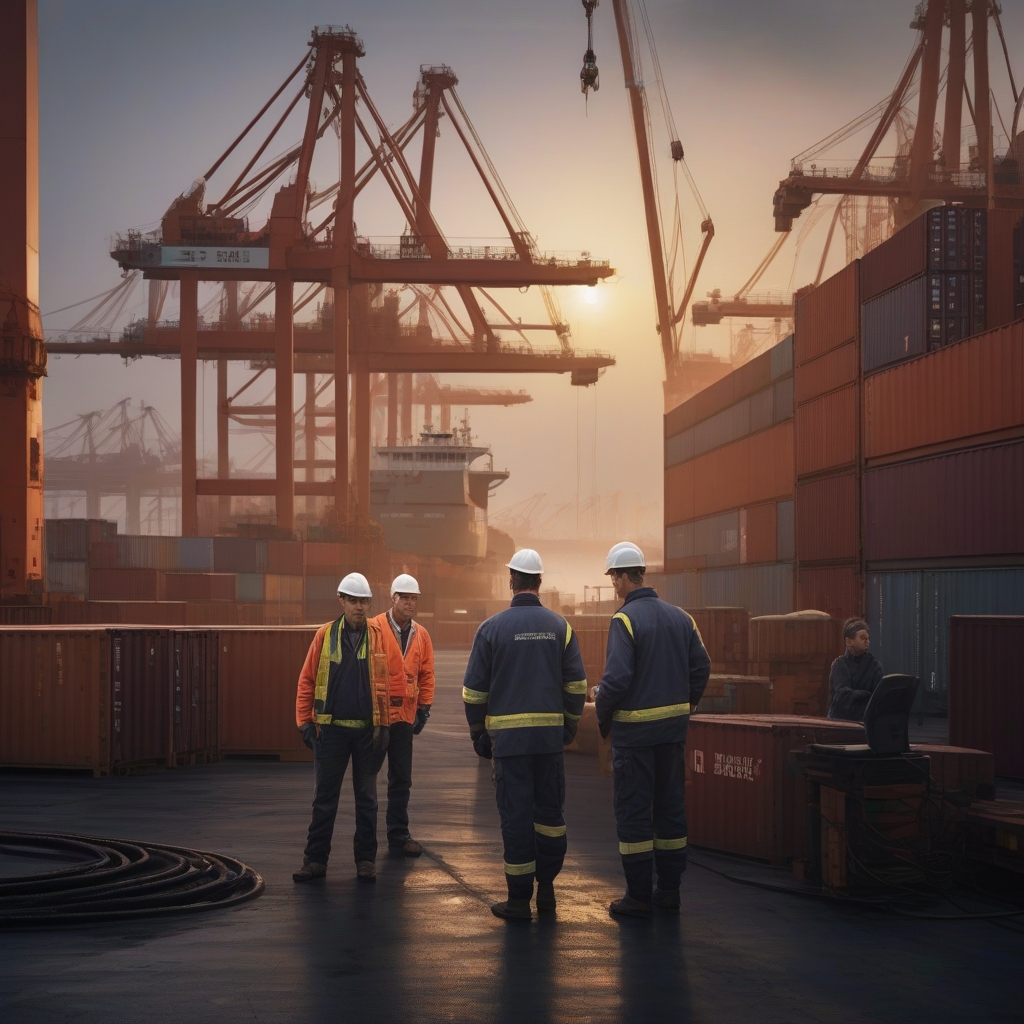Introduction
In a significant development for the shipping industry, the recent dockworkers strike has finally come to an end, yet the debate surrounding the future role of automation and artificial intelligence in ports remains vigorously alive. This resolution promises to shift not only the daily operations at docks globally but also to rekindle discussions about integrating advanced technologies alongside human labor. Herein, we explore the implications of this strike’s conclusion and delve into the ongoing conversations about automation and AI in the industry.
The End of a Prolonged Strike
The dockworkers’ strike, which had been ongoing for several months, disrupted operations at major ports worldwide, affecting global trade flows and supply chains. The primary contention fueled by the workers was the impending threat of job loss due to automation. Dockworkers voiced concerns about their job security as port operators leaned toward implementing AI and autonomous technologies to enhance efficiency and reduce costs.
Though the strike has ended, it has left a lasting imprint on labor relations within the maritime sector. Key points of the agreement have aimed to address the workers’ anxieties, ensuring a degree of protection from automation and securing fair labor practices going forward.
Key Outcomes of the Agreement
Several critical components stand out in the new agreement between dockworkers and port operators:
- Job Security: The agreement includes stipulations for job preservation, ensuring that automation will not lead to immediate large-scale redundancies.
- Training Programs: A collaborative effort to retrain workers for roles involving technology handling and maintenance.
- Profit Sharing: A portion of the profits generated from automated systems will be shared with employees to cushion the financial impact on them.
These measures reflect a balanced approach aimed at integrating technology while preserving the human workforce’s role at the ports.
The Automation Debate
Despite the resolution of the strike, the broader debate over automation in the shipping industry continues. As technologies grow more sophisticated, ports face the challenge of blending traditional labor practices with innovative solutions that promise enhanced productivity and safety.
Benefits of Automation
Automation presents several advantages that cannot be ignored:
- Increased Efficiency: Autonomous vehicles and robotic systems can operate continuously without break, potentially streamlining cargo handling and reducing turnaround times.
- Enhanced Safety: Machines can perform hazardous tasks, minimizing the risk of injury to human workers.
- Cost Reduction: Over time, automated systems can lower operational costs by reducing the need for human labor.
These benefits drive the push for technology adoption, making it attractive to port operators seeking to maintain competitiveness in a rapidly evolving global trade environment.
Challenges and Concerns
However, the introduction of automation is not without its challenges:
- Job Displacement: The most pressing concern among workers is the potential for significant job losses as machines replace manual labor.
- High Initial Costs: The implementation of innovative technologies involves substantial upfront investments, which not all ports can afford.
- Integration Issues: Melding traditional working practices with cutting-edge technology poses logistical and operational challenges.
- Ethical Concerns: There is an ongoing debate about the moral responsibility of industry leaders in balancing technological advancements with the well-being of their workforce.
Addressing these concerns remains crucial to fostering an environment where both human workers and automated systems can coexist and complement each other in the shipping industry.
The Path Forward
To successfully navigate the future of automation in ports, a collaborative approach between labor organizations, port operators, and technology developers is essential. Some strategies to consider include:
Innovation with Inclusion
Developing technology that augments rather than replaces human effort can create a symbiotic relationship between dockworkers and automated systems. By focusing on technologies that assist human operators in performing their tasks more efficiently, we can create new job categories that incorporate technological expertise alongside traditional skills.
Continuous Employee Training
Investing in retraining programs ensures that workers are not left behind as new technologies are introduced. Providing training equips the workforce with the necessary skills to manage, maintain, and even improve upon automated systems, ensuring their relevance in a technology-driven environment.
Policy and Regulations
Robust policies and regulations must guide the integration of automation in ports. These can include guidelines on technology adoption rates, labor protection laws, and incentives for innovation that prioritize human welfare.
Conclusion
As the shipping industry moves towards a future infused with automation and AI, the resolution of the dockworkers’ strike stands as a landmark event highlighting the importance of addressing both technological advancement and human labor concerns. Embracing a balanced approach that ensures the benefits of automation while safeguarding workers’ interests will be paramount in shaping the future of ports worldwide. The debate continues, reflecting a broader conversation about the future of work in an increasingly automated world. However, with the right strategies and collaborative efforts, this landscape can evolve to benefit both technology and humanity.

Leave a Reply